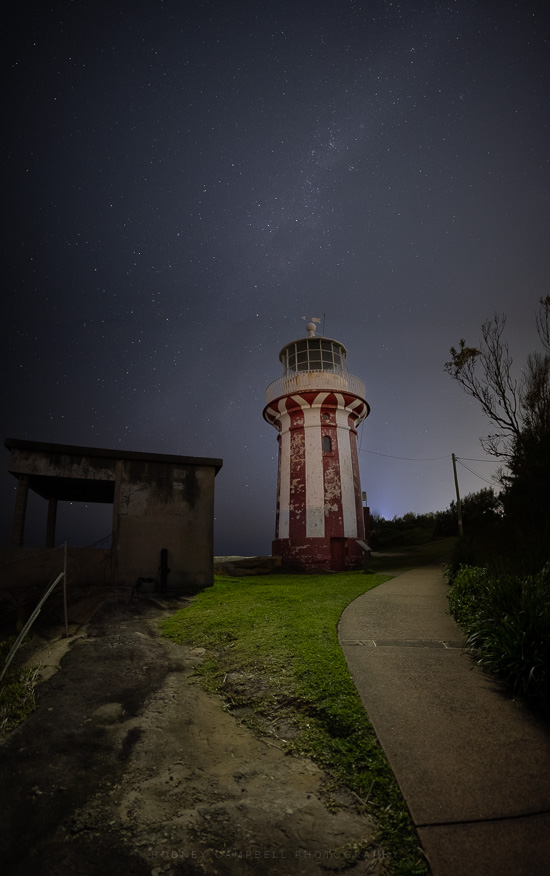Searching
by Rodney Campbell on Apr.13, 2022, under Photography
Searching
Perhaps this should be titled “searching for the milky way!!!”…
My original intent on coming out here to Hornby Lighthouse at this time was to shoot the milky way over this nice striped lighthouse. I was searching for seaside locations where we’d be looking eastwards out over the ocean for the least amount of light pollution
My other intent was to try out my new Nikon Z 20mm f/1.8 S lens. I’d purchased this almost specifically for astro work. To use in conjunction with my much wider Samyang 14mm f/2.4 lens
There are a couple main criteria when searching for a lens to use for (static milky way) astro work like this:
- the widest aperture – faster (lower f/number) is typically better – anything with f/2.8 or faster will be considered very good. The reason you want this is – the night sky is very dark. A low f/number allows more light to hit the sensor and thus you can use lower ISO’s to shoot the “same” exposure. So f/1.8 is great (if you can actually shoot astro at that aperture)
- focal length – wider (lower mm) means you can use longer shutter speeds (again letting more light in) and still retain “point” stars (no star trailing)
- There is a nice rule/formula for this (which uses the focal length, image sensor pixel pitch/density and aperture) to calculate optimum maximum shutter length. This is called the NPF rule: (35 x aperture + 30 x pixel pitch) ÷ focal length = shutter speed in seconds. For my Nikon Z7: 14mm f/2.4 -> 15s and 20mm f/1.8 -> 9s (and 35mm f/1.4 -> 5s)
- lens imperfections/aberrations (you actually DON’T want any of these) – like
- Coma (comatic aberration) – comet like shape for point light sources. Usually noticed towards the corners. Sometimes it can be really bad with batwing shapes, etc. You actually want stars to be points. Looking at the images I took on the night this lens is really very good with this – almost no coma
- Astigmatism – point light sources at the edge of the frame to appear to stretch in a line. Again this lens was really good with this – nice points right to the edge of frame
- Chromatic Aberration – purple halo’s around bright objects/edges. Again the lens was excellent
- Distortion – caused when the lens projects different sized images at different points along the frame. For example barrel or pincushion. Again no issues detected (but then again the Z system corrects for these in camera)
- Vignetting – causes the edges of the frame to appear darker than the centre of the image. Especially common on fast (low f/number) lenses. There is some with this lens but it’s not bad
- For most lenses many of the above issues can be reduced when shooting at smaller apertures (higher f/numbers) – however that typically defeats the main purpose of having a “fast” “wide aperture” lens
Anyway practical upshot is it looks like this lens is extremely good for astro and can be shot even at f/1.8 with no issue
Oh yeah… and back to the image above :). I’d shot a whole pile of overlapped frames to generate various stitched vertical panorama compositions. To be exact 8 different vertorama sets. Alas this was the only one where three frames would even stitch into something useful!. It seems there weren’t enough stars in the sky (when any frames only included sky/stars – e.g. the frame pointing upwards and straight up) for the overlapping frames to auto align 🙁
So the stitched pano session was pretty much a real bust 🙁
I am however very hopeful with this lens and look forward to using it in good astro conditions somewhere 🙂







